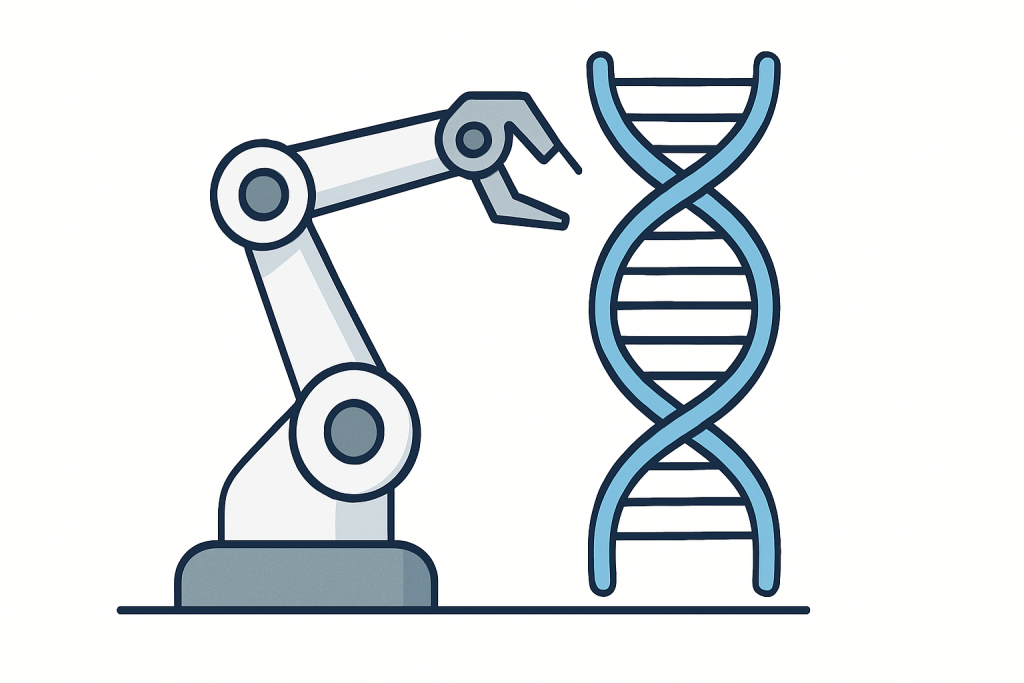The next generation of robots may not be built — they may grow.
From Mechanical Minds to Living Systems
For decades, robotics education has focused on mechanics, sensors, and circuits.
Students learned to build machines that mimic human movement or perform simple automation tasks. But as science and technology converge, a new kind of robotics is emerging — one where biology and engineering intersect.
This field, called bio-robotics, blends mechanical design, genetic programming, and computational modeling to create living machines — systems built from cells, tissues, or bio-inspired materials that behave like engineered devices.
For educators, this means the STEM curriculum must evolve — from teaching students how to build machines that move, to teaching them how to design systems that live.
What Are Living Machines?
Living machines aren’t science fiction — they already exist in research labs.
Examples include:
- Xenobots: programmable organisms built from frog cells that can move, self-heal, and even carry small payloads.
- Biohybrid robots: mechanical frameworks powered by living muscle tissue or controlled by neural cells.
- Synthetic ecosystems: engineered microbial communities designed to perform environmental cleanup or material synthesis.
These aren’t traditional “robots” — they blur the boundary between organism and algorithm. Students who study them must understand biology, coding, and ethics in equal measure.
The Shift: From Hardware to Lifeware
Traditional robotics education emphasizes hardware — motors, gears, sensors.
Bio-robotics introduces lifeware: living materials that grow, adapt, and repair themselves. Instead of assembling metal and plastic, students simulate and design biological interactions.
This shift redefines how we teach problem-solving:
- Mechanical design → Systems biology: understanding living feedback loops.
- Programming logic → Genetic logic: using “if-then” logic in DNA or neural networks.
- Engineering testing → Biological simulation: predicting how living components behave under different conditions.
It’s no longer about control — it’s about co-design with nature.
Educating the Bio-Engineer: New Curriculum Frontiers
To prepare students for a future of living machines, STEM education needs to expand its toolkit.
Emerging curriculum elements include:
- Computational Biology: using code to simulate biological processes.
- Synthetic Design Labs: virtual spaces where students can prototype genetic systems.
- Soft Robotics & Biomaterials: exploring flexible, bio-compatible mechanisms inspired by organisms.
- Ethics in Bioengineering: examining the implications of creating life-like machines.
These lessons combine experimentation and reflection — building not just skill, but responsibility.
Ethics at the Core of Design
When life becomes programmable, ethics becomes essential.
Students must grapple with deep questions:
- Should we build self-replicating systems?
- How do we define “alive”?
- Where do design and evolution intersect?
By embedding ethical inquiry into technical education, schools prepare students for a future where creating is inseparable from caring — and innovation must be guided by responsibility.
From STEM to STEB: Adding “Biology” to the Core
The acronym STEM — Science, Technology, Engineering, and Math — has driven educational innovation for years. But as bio-robotics rises, it may be time to expand that framework into STEB: Science, Technology, Engineering, and Biology.
This addition reflects reality: the world’s most advanced technologies — from gene editing to neural interfaces — are built on biological principles. Students fluent in both code and cells will lead the next wave of discovery.
The Takeaway
The classroom of the future won’t just build robots — it will cultivate life forms that compute, sense, and adapt.
Educators have the opportunity to move from teaching mechanical automation to biological innovation, helping students understand that the systems of the future will be as alive as they are engineered.
Building a STEM curriculum for living machines isn’t just about teaching technology — it’s about teaching students to design responsibly in a world where biology and code are one.


